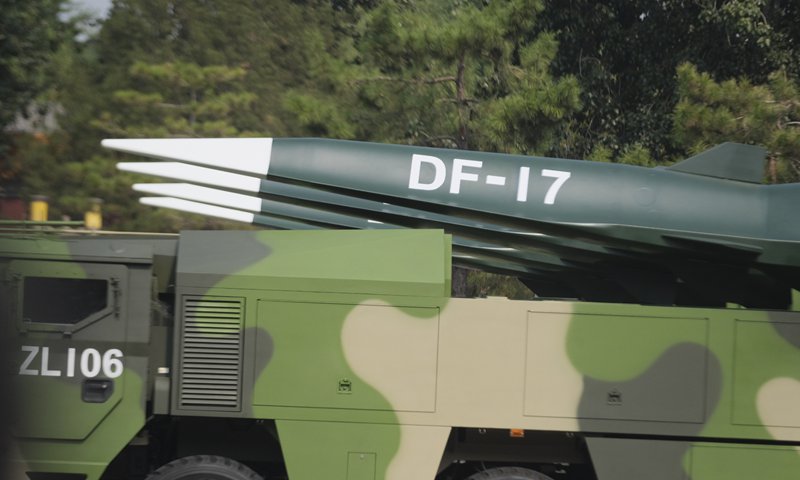China’s hypersonic cruise missile sees technological breakthrough: reports
By Liu Xuanzun Source:Global Times Published: 2020/6/8 10:19:44

Photo: Zhang Haichao
A top Chinese science institute recently made record-breaking progress in a scramjet program which Chinese media speculate could lead to significant advances in the development of China's hypersonic cruise missile, another type of hypersonic weapon that is more powerful than China's DF-17 hypersonic glide-boost missile.
A team led by Fan Xuejun at the Institute of Mechanics under the Chinese Academy of Sciences has developed a type of scramjet that ran continuously for 600 seconds in a ground test, Weihutang, a program on military affairs affiliated with state broadcaster China Central Television (CCTV), reported on over the weekend.
This broke the world record of 210 seconds set by the US' X-51 aircraft, Weihutang said.
A powerful scramjet, also known as supersonic combustion ramjet, is crucial for a hypersonic cruise missile to reach hypersonic speed, but developing one is highly challenging due to issues with heat resistant materials and cooling of the engine, the report said.
Hypersonic weapons are known for their high speeds and unpredictable trajectories, which render most of the current generation of air defense systems useless against them.
China unveiled its DF-17 missile for the first time at the National Day military parade on October 1, 2019. This type of missile was widely believed by military observers to be a hypersonic weapon due to its aerodynamic design.
Weihutang said that the DF-17 is a type of hypersonic glide-boost missile, meaning that it is propelled into the sky via a rocket and glides in the air using shock waves generated by its own hypersonic flight, but the other type of hypersonic weapon, the hypersonic cruise missile, has constant thrust thanks to the scramjet, which gives it a longer range and even more unpredictable trajectory.
The DF-17 is a short to medium-range missile, and using a scramjet can potentially extend its range by at least five times, allowing it to become intercontinental, Shanghai-based news website eastday.com reported on Friday, citing estimations by experts.
Since a hypersonic cruise missile does not require a rocket as large as the one used by a glide-boost missile, its size and weight are smaller, allowing it to be stealthier, the eastday.com report said.
The DF-17 is not the only item in China's hypersonic aircraft program. In August 2018, the China Academy of Aerospace Aerodynamics under the China Aerospace Science and Technology Corporation successfully launched the Xingkong-2, or Starry Sky-2, China's first waverider hypersonic flight vehicle.
It is not known if the Xingkong-2 is a boost-glide or cruise missile, but a CCTV program aired in late 2019 suggested it might use a different flight pattern to the DF-17.
Other countries including the US and Russia are developing both types of hypersonic weapons, and it will be natural to see China develop new ones following the DF-17, experts told the Global Times.
Posted in: MILITARY